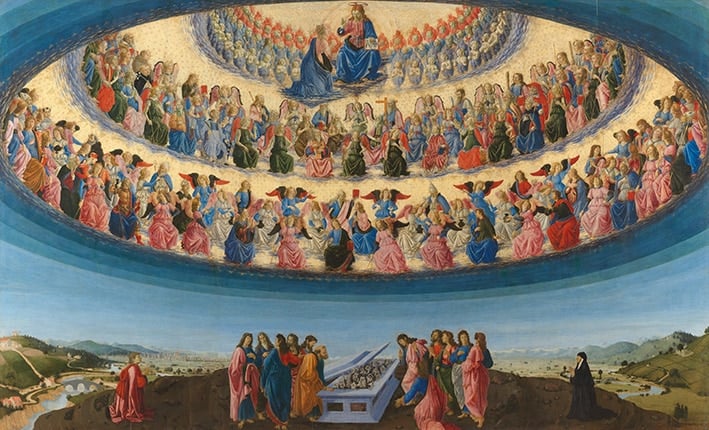
“Dear Father, in the Bible we see numerous names for the different types of angels, like seraphim and cherubim, archangels and angels. What do we know about these different types? Is there a hierarchy of the angels?
To answer your question, let us begin with Sacred Scripture. The prophet Isaiah writes that he saw the Lord sitting on a throne and “Above him stood the seraphim; each had six wings … And one called to another and said: ‘Holy, holy, holy is the Lord of hosts; the whole earth is full of his glory” (Is 6:2-3).
We recognise these last words as those used at the end of the Preface in every Mass. Christian tradition places the seraphim in the highest rank of angels.
Another rank of angels are the cherubim, who are mentioned in the book of Exodus with reference to the Ark of the Covenant: “And you shall make two cherubim of gold; of hammered work shall you make them, on the two ends of the mercy seat … The cherubim shall spread out their wings above, overshadowing the mercy seat with their wings, their faces one to another…” (Ex 25:18-20).
Without being called cherubim, these angels with two pairs of wings also appear in the prophecy of Ezekiel (cf. Ez 1:23). Tradition places the cherubim in the second rank of angels.
We find more types of angels in the letters of St Paul. For example, he writes that in Christ “all things were created, in heaven and on earth, visible and invisible, whether thrones or dominions or principalities or authorities – all things were created through him and for him” (Col 1:16). These four types of angels are also considered to be part of the angelic hierarchy.
The Catechism uses this text to say that “Christ is the centre of the angelic world. They are his angels …They belong to him because they were created through and for him” (CCC 331). St Peter too speaks of different types of angels.
He writes that Christ has gone into heaven and is at the right hand of God, “with angels, authorities and powers subject to him” (1 Pet 3:22).
The classic treatise on the hierarchy of the angels comes from Pseudo-Dionysius the Areopagite, who wrote On the Celestial Hierarchy around the turn of the 6th Century.
The Dominations are considered to regulate the duties of lower angels and only rarely do they make themselves physically known to humans. The Virtues are the spirits of motion and they also assist in governing nature …”
Basing himself partly on the texts of Scripture we have just seen, Pseudo-Dionysius distinguished three spheres of angels, each with three categories of angels. It must be said at the outset that this treatise is his own work, based on his own imagination, not a work accepted and used by the Magisterium of the Church.
For example, the Catechism of the Catholic Church does not distinguish a hierarchy of the angels.
In the first sphere, according to Pseudo-Dionysius, are angels who see and worship God directly, and who communicate God’s will to the angels who are closer to the life of man.
The angels in the first sphere, in descending order, are the Seraphim, Cherubim and Thrones. St Thomas Aquinas imagined Satan as a fallen Cherub (cf. STh I, q. 63).
In the second sphere are angels who act as heavenly governors of creation by subjecting matter and by guiding and ruling other spirits. In this sphere are the Dominations, sometimes called Lordships or Dominions, Virtues and Powers.
The Dominations are considered to regulate the duties of lower angels and only rarely do they make themselves physically known to humans. The Virtues are the spirits of motion and they also assist in governing nature, in working miracles and in strengthening humans’ faith in God. The Powers are able to restrain evil forces.
In the third and lowest sphere are the Principalities, Archangels and Angels.
The Principalities, or rulers, preside over the bands of angels and charge them with carrying out their divine mission.
St Paul refers to them, writing that Christ sits at the right hand of God in the heavenly places, “far above all rule and authority and power and dominion” (Eph 1:21). In that same letter he writes: “that through the Church the manifold wisdom of God might now be made known to the principalities and powers in the heavenly places” (Eph 3:10).
It is interesting that the name “Archangel” appears only twice in the New Testament (cf. 1 Thess 4:16 and Jude 1:9).
The only Archangel whose name is given is Michael (Jude 1:9), although Raphael (Tobit 12:15) and Gabriel (Lk 1:26) are also considered to be Archangels.
So yes, there are many types of angels but we cannot be certain about their hierarchy.
Related:
